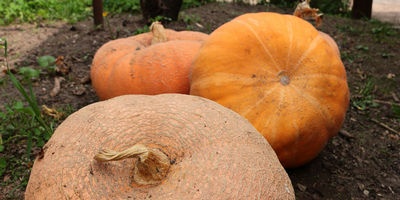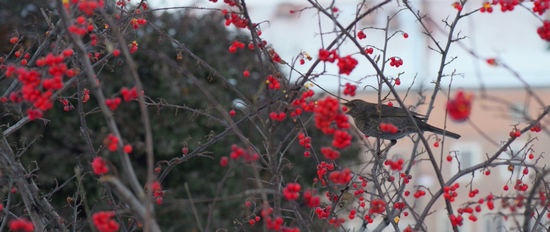Continuous flowering garden |
|
The device of such compositions requires a fairly large assortment of plants, selected so as not only to alternate in color, but also to create colorful combinations at any time of the growing season. The second difficulty lies in the fact that wilted flowers, yellowed and dried leaves should not be visible, otherwise all the pleasure from the plants blooming nearby will be lost. In our age, amateur flower growers have come to the conclusion that it is much easier and more efficient to arrange the corners of seasonal sound. The same mixborders, as well as flower beds, ridges, curbs; free compositions separately from spring, summer, autumn colors are distributed over the territory so that you can admire bright and delicate combinations. At the moment of flowering, each such corner, as it were, concentrates in itself the wealth that nature gives us at this time. And when the petals start flying around here, the bushes lose their shape, this does not bother or sadden us - after all, it has already flashed with colors and attracts a new "center of gravity" elsewhere in the garden.
Such flowers are dispersed in massifs, in groups in the garden — planted under trees, including fruit trees, near evergreen (Mahonia, Cossack juniper, mountain pine) or bushes flowering very early (forsythia, wolf). By the way, many of the first-borns of the flower kaleidoscope grow by self-seeding and perfectly tolerate partial shade formed by non-leafy or slightly green crowns. And it doesn't matter that there may be areas around
When creating a spring corner with an emphasis on tulips, they are planted quite often, after 12-15 cm. It is highly desirable to place low plants between them or in the foreground, creating an even floral carpet at the same time. More often than others, they take blue or purple viola (pansies), forget-me-not, snow-white arabis, daisy.In this way, you can arrange a flower bed, a rabatka, a border.
The combination of daffodils with a yellow center and thick blue muscari in the foreground is very elegant. Such a border can be the best garden decoration. The choice of plants is great, but if we talk about the main assortment, then you should definitely include primroses and incense. They are simple in culture and have, in addition to beautiful flowers, elegant, long-lasting foliage, and, alas, bulbous are devoid of this dignity. Numerous species of primroses and their hybrids are well known. With their help, you can fill the pauses between the peaks of flowering of daffodils, tulips, irises, poppies. Spring primroses, ear, kortuza form dense rugs of leaves and therefore are indispensable for arranging a good curb along the path. Whichever color change is in the background, primroses "keep" the shape of the flower garden until autumn. Well, besides, their flowers themselves are so fresh, varied in color, that they make colorful cheerful groups.
Small-toothed primrose (denticulate) with lilac balls of inflorescences on stems 30 cm high goes well with daffodils, blue muscari, white arabis, purple shaved, yellow perennial alimum rocky in picturesque spring compositions with boulders. In the spring corners, flowering shrubs play a special "solo". Their combination with bulbs and perennials makes an extraordinary impression. Even a simple planting of a dense purple horned violet under a pink terry cherry, low almonds, and a blue forget-me-not under a snow-white spirea bride creates the effect of spring prosperity. What can we say about more complex and sophisticated compositions! Garden calendar |
| How to grow lemongrass | Violation of the dormant period in the vegetative parts of the plant |
|---|
New recipes
 Continuous flowering garden. This age-old dream of home garden owners is not so difficult to realize if you think carefully about the choice of plants and their placement.
Continuous flowering garden. This age-old dream of home garden owners is not so difficult to realize if you think carefully about the choice of plants and their placement.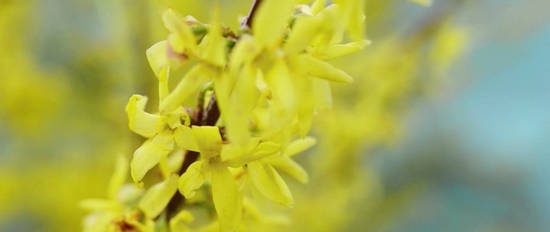 Perhaps, the creation of spring compositions is a particular difficulty even with this solution of floral decor. And that's why. It is not for nothing that many early flowers are called ephemeres or epheroids, their "finest hour" is so fleeting, followed by external extinction. For example, purple, white, yellow crocuses are good, but they please only a few days. There are also very modest, inconspicuous plants - blue woodlands, white pushkinia, lilac liverwort, slightly greenish galanthus snowdrops. They are very dear to us, as the first messengers of nature awakening from winter sleep, but it is impossible to build on them, for example, the main, ceremonial composition.
Perhaps, the creation of spring compositions is a particular difficulty even with this solution of floral decor. And that's why. It is not for nothing that many early flowers are called ephemeres or epheroids, their "finest hour" is so fleeting, followed by external extinction. For example, purple, white, yellow crocuses are good, but they please only a few days. There are also very modest, inconspicuous plants - blue woodlands, white pushkinia, lilac liverwort, slightly greenish galanthus snowdrops. They are very dear to us, as the first messengers of nature awakening from winter sleep, but it is impossible to build on them, for example, the main, ceremonial composition.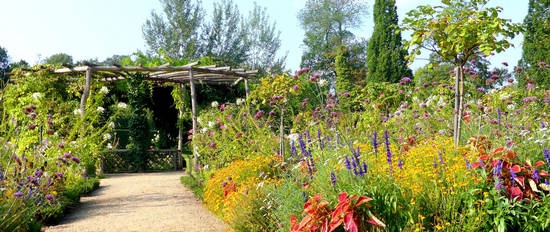 Of course, tulips take the main "blow" in spring. By the way, many land owners in vain limit themselves to only the popular red varieties of Darwin's hybrids (Oxford, Parade, London). Firstly, even within this class there are tulips of a wide variety of colors. And secondly, and this is more important, if you use varieties of other classes (simple Early, Terry Early, Triumph, Simple Late, Lily-colored, Rembrandt, Parrot, Terry Later, etc.), even if only 5-7 pieces, you can to get amazingly beautiful compositions, where different forms of a flower, subtle nuances of shades will delight us not 10-12 days, but 1.5-2 months. After all, the first tulips bloom in the middle lane in mid-May 2-3 weeks earlier than Darwin's hybrids. These are very fashionable now low-growing varieties from the Kaufman and Foster class, and the latter bloom until the end of June - Terry late or Peony.
Of course, tulips take the main "blow" in spring. By the way, many land owners in vain limit themselves to only the popular red varieties of Darwin's hybrids (Oxford, Parade, London). Firstly, even within this class there are tulips of a wide variety of colors. And secondly, and this is more important, if you use varieties of other classes (simple Early, Terry Early, Triumph, Simple Late, Lily-colored, Rembrandt, Parrot, Terry Later, etc.), even if only 5-7 pieces, you can to get amazingly beautiful compositions, where different forms of a flower, subtle nuances of shades will delight us not 10-12 days, but 1.5-2 months. After all, the first tulips bloom in the middle lane in mid-May 2-3 weeks earlier than Darwin's hybrids. These are very fashionable now low-growing varieties from the Kaufman and Foster class, and the latter bloom until the end of June - Terry late or Peony.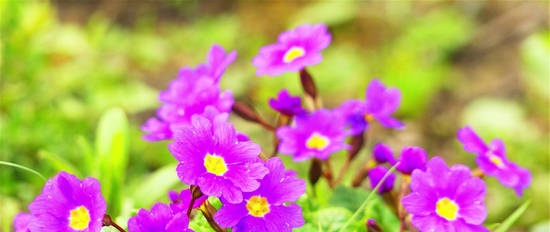 If the basis of the floral decor is daffodils, it is better to make the composition more relaxed, in a landscape style. In England such a technique has been known for a long time. The grower places the bulbs on a shovel and, with his back to the lawn, throws them over his shoulder. As they fell, they plant. Daffodils, especially simple (Poetic) ones, look charming under slightly green old trees or flowering fruit trees, when one gets the impression of white foam lace.
If the basis of the floral decor is daffodils, it is better to make the composition more relaxed, in a landscape style. In England such a technique has been known for a long time. The grower places the bulbs on a shovel and, with his back to the lawn, throws them over his shoulder. As they fell, they plant. Daffodils, especially simple (Poetic) ones, look charming under slightly green old trees or flowering fruit trees, when one gets the impression of white foam lace. Low primroses are an excellent material for small "calico" beddings, vases, baskets, balcony boxes, hanging pots.
Low primroses are an excellent material for small "calico" beddings, vases, baskets, balcony boxes, hanging pots.